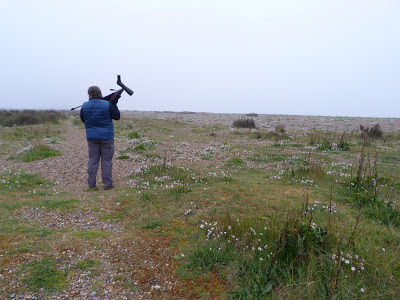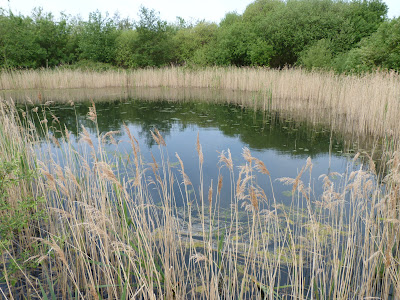I decided about six weeks ago as flights from Luton to Belfast on Easy Jet where only about £50 return I would book a day trip to Northern Ireland for Cryptic Wood White. A bit of a gamble, but a bit of research on emergence times suggested that they often peaked around mid May, but in some years came out later, and the peak could be in early June. Not expecting another poor spring for sun, I went for a mid/late May date and booked the flight. As the day drew nearer with only two decent days of sun in May so far, on the 7th and 16th, a dull day loomed ahead. Research on Butterfly Conservation's Northern Ireland branch website identified three sites around Craigavon, with Craigavon Lakes appearing to be the main strong hold with counts into the 100s in previous years. I made contact with Ian Rippley to get more precise details to avoid plodding around in the wrong area. Ian was very helpful and had even offered to met me at the site but due to personal reasons was unable to do so on the day, but the offer was welcome. Wednesday morning at Luton was cold and overcast and I set off, in anticipation of having to make a repeat visit. Landing at Belfast the weather did not seem any better, and together with a brisk NW wind, suggested I would be very lucky to have any success. The hire car was from the Eire, the only downside was that the speedometer was in km - fortunately no speed cameras anywhere.
The roads were, compared to the SE, very easy going. They were not empty, but the traffic was moderate and flowed easily, a strange feeling, until on the main A26 we met.....
Which we followed for about 1/4 mile or so. It made a real change to drive somewhere with less traffic. Bliss, not even ruinned by following the herd of cows!
At Craigavon Lakes, which turned out to be only about 30 miles from the airport, making it a real easy hop over to do, the weather was still dull and overcast. With Ian's directions it was really easy to find the rough grass area along the railway line and I walked the entire length of the north side without luck and crossing under the railway made my way back along the south side.
As I suspected the board might contain the only Cryptic (still shown as Real's) Wood White, a photo seemed worth while. As I more or less got to the end of the south embankment, the cloud started to have the odd break, allowing some sun to shine, albeit over the next hour or so, only on and off for five or ten minutes at a time, but the sun was strong enough to produce a single Cryptic Wood White!
Over the next couple of hours I manged to see three, possibly four on the south side and returning to the north another three, which considering the weather was a real result. The only other butterflies seen was a a single Large White and a mating pair of Green-veined Whites.
Green-veined White
Cryptic Wood White
One other thing that struck me about Craigavon Lakes was the amount of birdlife - there were Reed Buntings singing everywhere. I cannot remember anywhere in the UK in recent years where I have heard them in such densities as here. Also there were a good number of Sedge and Willow Warblers singing. The birds seemed to be more tolerant of my presence and would pop up right next to me. I could not help wondering, as I saw so few people in the rough grassland area whether the lack of disturbance was a factor, unlike in the UK where there are people everywhere. Is this effecting our bird populations?
After Craigavon Lakes I headed over to the nearby Oxford Island NNR. Cryptic Wood White here is seen in lesser numbers and more on the small areas of marginal grassland. The weather now had become a bit more overcast and none were seen here though in one area of boggy field when the sun did make an appearance suddenly over 60 green-veined Whites appeared. The only other butterfly seen was an Orange Tip. Birding wise it was fairly quiet in an extremely brisk NW wind.
Green-veined White
Orange Tip
Juvenile Hooded Crow.
I had forgotten that Hoodies replace Carrions in Ireland.
One of the reserves bird hides
After Oxford Island I headed over to Motiaghs Moss NNR, an area of lowland bog. By this time there was more or less complete cloud cover, with the odd spit of rain. Here again Cryptic Wood White is only seen on the road edges or in the odd field. I only managed one Orange Tip here, plus a probable Four-spotted Chaser and a Damselfly, which is either a Azure or Irish Damselfly, but as it is a newly emerged female it is proving tricky to get someone to confirm what it is. but I rather suspect it is Azure Damselfly.
Azure Damselfly.
Belfast was left via the last flight back to Luton.
The other thing that struck me about the day - was I did not see anyone Birdwatching all day - another novelty compared to England, what a change, moderate traffic and not a person around every corner, lots of birds singing to boot!


















































